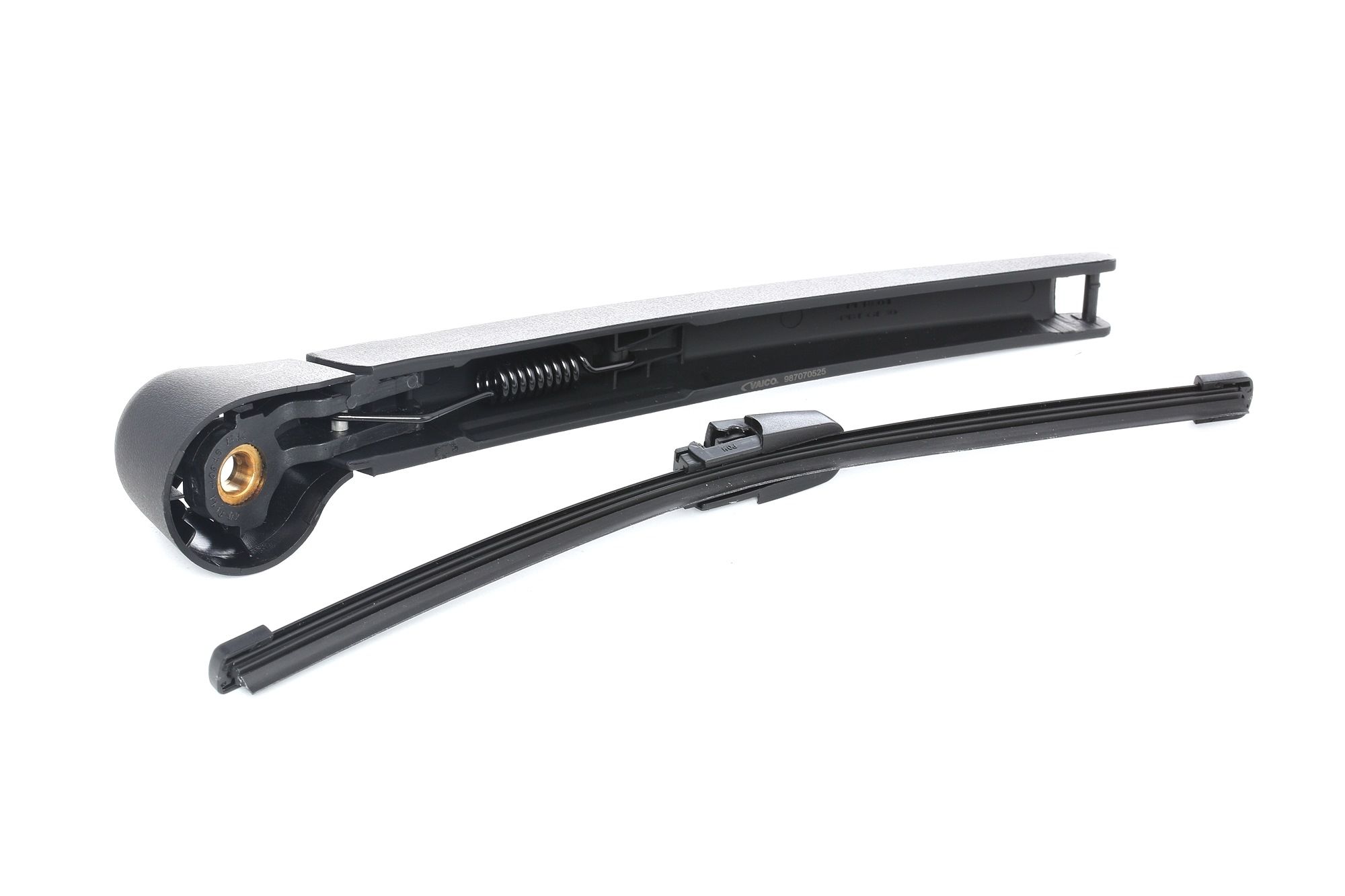How to Fix Wiper Blades: Complete Repair Guide for UK Car Owners
Fixing faulty wiper blades is essential for safe driving in the UK, where motorists face over 200 rainy days annually. Most windscreen wiper problems stem from worn rubber, debris build up, or loose connections that cause streaks, juddering, or complete failure. Luckily, many issues can be repaired at home with basic tools, saving money while ensuring clear visibility on the road ahead. According to DVSA statistics, faulty wipers contribute to thousands of MOT failures yearly, making proper maintenance crucial for UK drivers.
Common Wiper Blade Problems and Quick Diagnostics
Before attempting any repair, inspect your windscreen wipers carefully to identify the specific issue. Start by examining the rubber blades for visible wear signs - look for cracks, tears, or hardened edges that prevent proper contact with the windscreen glass. Notice whether the wiper arm moves smoothly or if there's excessive juddering during operation.
Performance testing reveals hidden problems that visual inspection might miss. Run your wipers on a damp windshield and watch for:
- Streaking patterns indicating worn rubber or debris
- Skipping motions suggesting poor blade-to-glass contact
- Squeaking sounds from dry or damaged rubber
- Uneven pressure creating partial cleaning areas
Professional Tip: "In our experience at AUTODOC, 70% of wiper performance issues can be resolved through thorough cleaning and minor adjustments rather than immediate replacement. Always try cleaning first - it's saved countless customers unnecessary expense." - AUTODOC Technical Team
If your blades show significant wear or damage, consider browsing our selection of quality wiper blades designed specifically for UK weather conditions.
Why Are My Windshield Wipers Not Working?
Complete wiper failure often indicates electrical problems rather than blade issues. Check your vehicle's fuse box first - a blown fuse is the most common cause of total wiper failure and costs pennies to fix. The owner's manual shows which fuse controls the wiper system.
Test the wiper motor by listening for humming sounds when activating the switch. If you hear the motor but see no movement, the linkage mechanism connecting the motor to the wiper arm may have broken. This repair typically requires professional attention, but checking costs nothing.
Fixing Wiper Blades That Are Smearing or Not Cleaning Properly
Smearing represents the most frequent wiper complaint among UK drivers. Before replacing blades, try this proven cleaning method that restores performance in many cases:
- Clean the windscreen thoroughly with soapy water to remove road grime
- Wipe blades with rubbing alcohol using a clean cloth to dissolve buildup
- Rinse with warm water to remove cleaning residue
- Test on damp glass to check improvement
For persistent smearing, examine blade alignment. The rubber should contact the windshield glass evenly across its entire length. Gently bend the wiper arm if necessary to achieve consistent pressure - but be careful not to over-adjust, as this can lead to dangerous blade failure.
Our comprehensive windscreen wiper cleaning guide provides detailed techniques for maintaining optimal blade performance between replacements.
| Smearing Type |
Likely Cause |
Quick Fix |
| Vertical streaks |
Worn rubber edges |
Clean or replace blades |
| Horizontal bands |
Debris on glass |
Clean windscreen thoroughly |
| Patchy areas |
Uneven pressure |
Adjust wiper arm tension |
| Water spots |
Contaminated washer fluid |
Replace with quality fluid |
Stopping Windshield Wipers From Skipping
Skipping occurs when blades lose contact with the windscreen during operation, creating dangerous visibility gaps. This problem often affects recently replaced blades that haven't properly seated on the glass surface.
Check that new blades match your original specifications - incorrect curvature causes skipping regardless of quality. The blade should follow the windscreen's contour naturally without forcing contact. If skipping persists after cleaning both the screen and blades, the wiper arm spring may need adjustment.

Electrical Issues: Wipers Won't Turn Off and Slow Operation
Wipers that won't stop typically indicate switch or relay problems. Locate the wiper relay in your fuse box - swapping it with another identical relay (like hazard lights) helps diagnose the issue quickly. If wipers stop after the swap, replace the faulty relay for under £10.
Slow wiper operation often connects to electrical problems rather than mechanical issues. Cold weather affects motor performance, but persistent slow operation suggests:
- Low battery voltage reducing motor power
- Corroded connections increasing electrical resistance
- Worn motor brushes requiring professional replacement
- Thick debris creating excessive drag
According to Department for Transport data, electrical wiper faults cause more accidents during adverse weather than mechanical blade problems, emphasizing the importance of addressing these issues promptly.
One Windshield Wiper Stopped Working
When only the passenger or driver side wiper fails, check the connecting linkage first. Modern cars use interconnected arms - a loose connection stops one side while the motor continues running. This creates uneven cleaning that's particularly dangerous in heavy rain or snow.
Inspect mounting bolts at the base of each wiper arm. Road vibration can loosen these connections over time, especially on UK roads with frequent potholes and speed bumps. Tighten carefully with appropriate tools, but don't over-torque as this can crack the windscreen.

Preventing Wiper Blade Damage: Scratches and Sticking
Prevention costs less than repair. Regular maintenance prevents most wiper problems before they affect your visibility or damage the windscreen glass. UK weather creates unique challenges - frequent moisture promotes rust, while road salt accelerates rubber deterioration.
Seasonal Care Schedule:
- Spring: Clean winter salt buildup, inspect for ice damage
- Summer: Check for UV rubber deterioration, clean insects
- Autumn: Remove leaf debris, prepare for increased use
- Winter: Use appropriate washer fluid, avoid forcing frozen wipers
Expert Advice: "Never operate wipers on dry glass or force them when frozen to the windscreen. This simple habit prevents 90% of premature blade failures we see in our workshop." - AUTODOC Service Specialists
Chips and cracks in the windshield glass create additional wear on wiper blades. Address minor damage quickly before it spreads and requires expensive windscreen replacement.
When to Replace vs Repair Your Wiper Blades
Smart UK car owners balance repair costs against replacement benefits. Consider these factors when deciding:
| Repair Scenario |
Replacement Scenario |
| Light debris buildup |
Rubber tears or hardening |
| Minor adjustment needed |
Frame damage or bending |
| Recently purchased blades |
Over 12 months old |
| Single performance issue |
Multiple problems present |
Quality wiper blade replacement typically costs £15-40 per pair and takes 10 minutes to install. Compare this against repeated cleaning and adjustment time - sometimes replacement proves more economical.
For premium vehicles or harsh UK conditions, consider Bosch wiper blades designed for superior performance and longevity.
Basic wiper maintenance requires minimal tools:
- Clean cloths for wiping blades and glass
- Soapy water for cleaning solutions
- Rubbing alcohol for rubber conditioning
- Basic spanners for adjustment work
Safety remains paramount when working around your vehicle's glass and electrical systems. Park on level ground, engage the handbrake, and wait for the engine to cool before starting work. Never force stuck wipers - frozen blades can crack windscreens or damage the motor.
Conclusion
The Highway Code requires clear visibility through the windscreen at all times. Driving with defective wipers violates these regulations and invalidates insurance coverage during accidents.
For complex electrical problems or structural damage, consult qualified technicians. Attempting major repairs without proper knowledge can create dangerous situations or expensive mistakes.
Frequently Asked Questions
Can I fix my windshield wipers myself?
Yes, most wiper problems can be repaired at home using basic tools and cleaning supplies. Simple issues like worn wiper blades, debris buildup, or loose connections require minimal mechanical knowledge to fix safely.
How to replace wiper blade clip?
Locate the plastic clip securing the blade to the arm, press firmly to release the locking mechanism, slide the old blade off, then attach new wiper blades by reversing the process until you hear a crystal clear click.
How to fix wiper blades from streaking?
Clean both the windscreen and rubber blades thoroughly to remove dirt accumulation. Use soapy water followed by rubbing alcohol on the blades. If streaking persists after cleaning, replacement is typically needed for optimal performance.
How to fix smudged windshield wipers?
Wash the entire windscreen with quality glass cleaner, then wipe each blade with a clean cloth soaked in rubbing alcohol. This removes oils and grime causing smudging. Check our best wiper blades guide for upgrades.
How to stop wipers from wiping?
Turn off the wiper switch completely and check for a stuck relay if they continue operating. If wipers won't stop, disconnect the battery briefly to reset the system, then inspect the wiper control switch for damage.
Why are my windshield wipers just smearing the water?
Smearing typically indicates worn wiper blades with hardened rubber edges or dirt contamination on the glass surface. Clean thoroughly first, but persistent smearing usually requires new replacement blades for crystal clear visibility restoration.






















